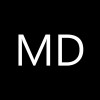Context
The replacement rate for dairy cows is very often close to 30% of the herd on conventional farms. Good heifer management is therefore essential and is the starting point for profitability and securing the future of dairy farms. However, as these young cattle have no productive value, they do not always receive all the attention and care necessary for optimum development.For example, it has been clearly shown that a first calving at between 24 and 26 months, at a liveweight of 625 kg, considerably reduces the costs of the rearing phase, maximises production per day of life as well as the cow’s longevity and results in more fertile animals compared with heifers that calve late or having an insufficient corporal development. To achieve this aim the heifers need to be carefully managed. They should attain high growth rates between 0 and 6 months and at the end of pregnancy (mean daily weight gain > 900 g/d) and they should grow more slowly at puberty (mean daily weight gain < 800 g/d), to avoid adversely affecting udder development and fertility.Objectives
At a round table the farmers clearly expressed their interest in having more information about the rearing of young dairy cattle, in particular the impact of housing conditions, parasitism treatment and feeding. The project will link these criteria to heifer growth, estimated by measuring their heart girth.Description of tasks
1. Selection of farms The study covers thirty farms in Wallonia’s two main dairy farming regions: the grassland region of Herve, and the Chimay region. Farms were selected on the basis of voluntary participation by the farmers, in order to obtain as wide as possible a range of situations within each region in terms of management at pasture and the housing of young cattle. The farms were selected by the Technico-economic Department of AWE (Mr Fabry) for the Herve region and in cooperation with the Department of Agriculture (Mr de Munck) in the case of Chimay.
2. Characterisation of the production unit The farms are characterised (quota, primipara and multipara production, replacement rate, feeding system, longevity, genetics, fertility, etc.) in order to link herd production performance with heifer management.
3. Experimental part Fifteen farms in each region will be visited regularly for two consecutive years, during both the indoor housing period and in summer, to measure the animals’ physical development (withers height, hip width, body length, heart girth and fattening status). These data will be collected for twenty or so heifers on each farm and will be linked to their feeding, the management factors and ambient conditions (temperature and humidity measured hourly, volume of air and space available per animal). When they are brought indoors the blood pepsinogen will be measured in a few heifers on each farm in order to assess the effectiveness of parasitism treatments applied by the farmer.
4. Design of database and statistical analysesThis task will be performed by the Department of Animal Production and Nutrition, in cooperation with the Biometrics Unit at CRA‑W.
Expected results
Whereas initially the project will mainly provide dairy farmers with food for thought and bases for comparison, in the course of time it ought to enable the practices and know-how that result in optimum heifer development to be identified, thus giving them the best possible start to their life as dairy cows.Moreover, the data on heifer development, linked to herd performance, ought to enable the economic impact of certain rearing practices to be assessed, thus providing future decision support for farmers.Results obtained
1. Growth At present, 760 heifers have been integrated to the project. Our data base consists currently of more than 11.000 data concerning the growth of the heifers.
The "Institut de l'Elevage" in France established a reference curve for a precocious calving (24-26 months). This one puts in evidence the evolution of the chest tour according to age (Figure 1 - in blue). For every region, the curve of development of the heifers of the project has been put in relation with the one recommended in France. These curves are practically identical. It means that on average, the heifers have a body development permitting to calve at 24 - 26 months.
2. Feed The animals have been grouped in different classes of age (interval of 3 months) in order to study the influence of the winter feed on growth. The ingestion has been estimated on basis of the french system (unité d'encombrement). The average daily gain has been determined thanks to the measurement of the chest tour and has been put in relation with ingestion of net energy and digestible proteins. In 93% of the cases, it has been observed that proteins were supplied in excess. Besides, some animals achieved a too weak growth in relation to the ideal for a precocious calving. This delay of growth was observable, for at least one class of age, in 48% of the exploitations. This problem of growth could be imputed to a non adapted feed in 68% of the situations.
3. Housing conditions The good ventilation of the stalls has also been investigated. In order to estimate the renewal of the air, we measured the absolute hygrometry difference between inside and outside according to the air volume. After 3 tests, it appeared that the efficiency of the ventilation was not optimal for one of our passages in 86% of the exploitations. However, this problem was only recurrent in 15% of the cases.
4. Parasitism The management of the parasitism remains a recurrent problem at every grazing season. We used the dosage of the blood pepsinogene to objectify the parasitic load of the herd. Following these analyses, it has been observed that the totality of the exploitations deals with too much efficiency their heifers. Consequently, the immunity was not acquired sufficiently, and this required a supplementary treatment the following year.
Contribution
CRA-W - Farm survey; analysis and interpretation of results; final report.Partners
- Association Wallonne de l’Elevage (AWE): Technico-economic Department, Mr Fabry.- Department of Agriculture: Mr de Munck.CRAW off coordinator
Pascale Picron
Funding
- DGARNE



